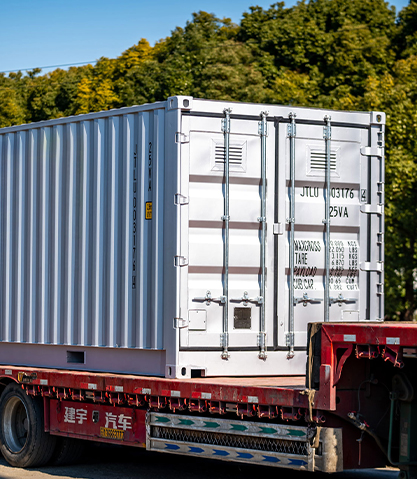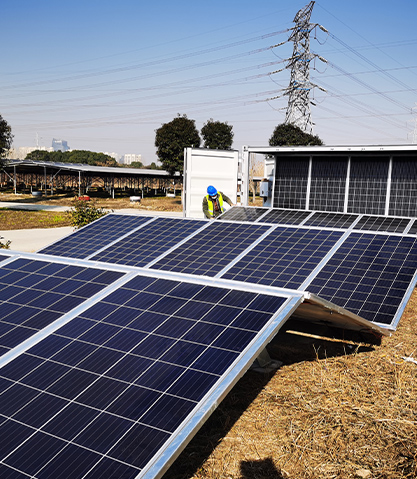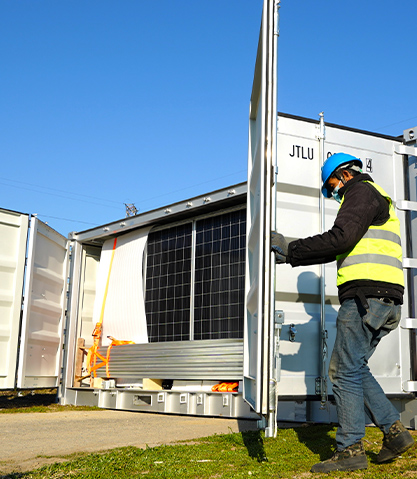The choice between prefabricated solar power containers and custom-built site-specific solar installations involves a careful analysis of cost, performance, scalability, deployment time, and long-term operational efficiency. Both approaches offer distinct advantages and limitations depending on the use case—such as remote electrification, backup systems, disaster response, industrial microgrids, or military field operations. Understanding the cost-benefit trade-offs is essential for project developers, procurement managers, and energy system designers looking to maximize return on investment while ensuring reliability and compliance.
Prefabricated solar power containers are modular, factory-assembled units that integrate photovoltaic panels, inverters, battery storage systems, and control electronics into a transportable container structure. One of the most significant advantages of this approach is speed of deployment. Since all components are pre-engineered, tested, and assembled under controlled conditions, site preparation is minimal, and commissioning time is dramatically reduced. This is especially valuable in time-sensitive scenarios such as emergency power supply or rapidly expanding off-grid electrification projects.
From a cost perspective, prefabricated containers offer savings in labor, engineering design, and construction oversight. The controlled factory environment helps minimize errors and material waste, contributing to lower overall CAPEX (capital expenditure). Moreover, mass production and standardization can drive economies of scale, especially for organizations deploying multiple units across various locations. Logistically, containers are built to be shipped and relocated with ease, reducing transportation and infrastructure setup costs.
However, there are trade-offs in flexibility and site optimization. Because prefabricated containers are standardized, they may not fully align with the unique conditions of a given location—such as solar irradiation patterns, wind loads, terrain geometry, or local utility requirements. This may lead to suboptimal solar orientation, inefficient land use, or oversizing/undersizing relative to actual demand. In extreme environments (very cold, humid, or dusty), the thermal management or protection measures designed into the container may not be sufficient without further customization, potentially raising OPEX (operational expenditure) through increased maintenance or performance losses.
In contrast, custom-built site-specific solar installations are engineered to match the exact parameters of the project site and intended application. This approach allows for maximum efficiency in solar panel placement, tilt angles, and energy flow design. It also accommodates larger-scale installations and advanced integration with existing infrastructure, such as grid-tied systems or hybrid configurations with wind, diesel, or biomass energy sources.
While custom builds typically require higher upfront design and installation costs—due to site assessment, civil works, engineering, and labor—they can offer better long-term performance and lower levelized cost of energy (LCOE), especially for large-scale or permanent installations. For example, custom systems can be optimized for energy demand curves, building shading profiles, and local weather patterns, which improves energy yield per kilowatt installed.
There are also implications in terms of regulatory compliance and permitting. Custom systems may require additional time and cost to meet local permitting requirements or grid interconnection standards. In contrast, prefabricated systems are often certified to international standards (such as IEC or UL), simplifying compliance—though they may still need some local adjustments or approvals.
In terms of maintenance and serviceability, prefabricated containers offer a self-contained ecosystem, often with plug-and-play diagnostics and modular components that are easier to swap or upgrade. Custom systems, while potentially more efficient, may involve more complex maintenance routines or require specialized technical expertise for troubleshooting.
Another aspect to consider is scalability and modular expansion. Prefabricated containers are inherently modular, making them ideal for phased deployment or temporary setups. Custom-built systems, although expandable, may require redesign or reconfiguration when expanding, which could increase project complexity and cost.
Prefabricated solar power containers provide a fast, mobile, and cost-efficient solution for standardized or temporary energy needs, particularly in off-grid or remote applications. However, they trade off some performance optimization and flexibility. Custom-built site-specific installations, while more expensive and time-consuming initially, offer superior long-term efficiency, tailored performance, and adaptability to complex site conditions. The optimal choice depends on factors such as deployment urgency, site variability, energy demand profile, local regulations, and budget constraints. Evaluating both short-term and lifecycle costs is essential for making the most informed and sustainable decision.

 English
English 中文简体
中文简体 عربى
عربى



